The Rugrats cartoon series debuted in 1991 on Nickelodeon, but it took a few years before the series exploded in popularity. The series became so popular that most of the new animated shows the cable channel was putting out at the time were done by the Klasky Csupo animation studio with exactly the same art style. Like any big hit cartoon, there were video games based on the TV series and movies, but they didn't start coming out until the PlayStation era. You needed a Game Boy Color to experience a Rugrats game that wasn't made with polygons in mind. More than two decades later, Wallride has gone ahead and made a Rugrats game for modern platforms that hearkens back to the NES days. Your feelings about Rugrats: Adventures In Gameland are going to be very dependent on how you feel about an authentically 8-bit game.
The story would be a solid enough premise for a Rugrats game from yesteryear. The quartet of babies (Tommy, Chuckie, Phil, and Lil) is hanging out and listening to Angelica try to boss them around when a TV commercial catches the babies' attention. It looks like a new Reptar game has just been released, and while the kids have no money for a video game, they do have Reptar coins. Their mission is to go around the house to find all of the Reptar coins and use that to buy the game.
The game starts off with you selecting from any of the five available levels to play in. A sixth level opens up once you've obtained enough coins to unlock the door leading to it. The levels take place in seemingly harmless areas like the bedroom, backyard sandbox, and kitchen, but they get transformed to more fantastic places like an ice level and desert level that are typical video game stages. The main objective of each stage is to find both the various Reptar coins scattered throughout each level as well as the screwdriver that acts as the key to finding the level's big boss. The game lets you get away with not finding all of the coins before finishing a level, it almost seems pointless since you need all but one or two coins to unlock the final level.
The gameplay mechanics are going to be very familiar to most retro game enthusiasts. You can jump on enemies to stun them and pick them up later to throw against other foes, or you can simply butt-stomp them to eliminate them. You can select between all four babies at the beginning of a stage and in the middle of one, unless you're playing at the game's highest difficulty level. Changing out babies is beneficial, since letting any of them get knocked out sends you back to the beginning of a level. It also means you'll be doing some switching to keep everyone topped up, as milk bottles and cookies act as health refills. Changing out babies is also strategic because they sport different traits when it comes to jumping ability and strength. Tommy is average all around, Chuckie can jump higher thanks to his flutter step, Lil can float down from a jump, and Phil can pull things up faster than the other babies.
The level select feature is essentially taken from Mega Man, minus the presence of an optimal path to take, while the character select option and abilities are lifted from Super Mario Bros. 2 — but with the added ability of performing that switch at any time. This isn't a slight, as these elements are implemented very well. The level design is well done in that they're open for a 2D game but still do a good job of leading you down the right pathways without getting too lost in the process. The enemies are fine, with only a few of them being tricky to deal with, and the few puzzles are very easy to solve. The boss fights are a standout, as they aren't difficult to deal with but a ton of fun to play once you start figuring out the attack patterns.
There is another classic game this title takes inspiration from: the original Castlevania. Unlike the other games, the game mechanics aren't fondly remembered. Getting hit with anything in the game produces a knockback effect. Some enemy projectiles and enemies travel in sine wave patterns, similar to the Gorgon heads in the original game. Since your only attack is a jump, the movement becomes more annoying to deal with, doubly so since the game takes the old-school mechanic of respawning enemies either after a set amount of time or once you travel between screens. Coupled with some placement in devious areas, and you get situations where getting hit means falling into a pit for double damage or getting knocked into level transition areas against your will. Most of this happens in the Attic level and toward the game's final level, which equates into several situations where taking damage is necessary yet you'll be forced to repeat situations until you get lucky and pass them correctly. It feels akin to bad design rather than something requiring real skill to overcome.
The game has a duality to its graphics, as this was originally designed to be an 8-bit title on the NES while also getting an HD remake alongside it. If you play in HD, you'll get an absolutely gorgeous game. The backgrounds are rich in details without being so overpowering that it fools you into thinking they're foreground elements. The animations for the enemies and the babies are as smooth as you'd find in the animated series, and the look is authentic to the original 1991 show, with its rich color palette.
You can switch to the 8-bit style on the fly, and those who do so will still get a great-looking game. The developers have stuck to what is possible on the NES, with no trickery used to do anything that couldn't be done on an original system. That means some sacrifices, like some backgrounds being stuck at a stark black instead of being more colorful. It does avoid the issue of slowdown in most places, and it produces a better sense of readability for items you can and can't interact with. The characters look much better than the enemies do, but the animations remain smooth, and the presence of some of the adults moving around at the beginning of each level would've still been amazing to look at when compared to many other 8-bit games of that time period.
The idea remains neat even after so many other titles have flirted with switching between original and remastered graphics on the fly, but Adventures in Gameland's implementation of this creates a big problem with the gameplay. The HD version zooms in the gameplay, so while it does fulfill the widescreen look, it does so by cutting off visual information from the top and bottom of the screen. The game places arrows to let you know of Reptar coins and cookies in out-of-sight places, but there's nothing for enemies, so you'll get plenty of danger coming out of nowhere instead of being completely visible like they are if you're playing with 8-bit graphics. It also presents a problem in other levels, where markers to help you track where you've visited are completely gone in HD, so the chances of getting lost increase greatly. While the game is undeniably beautiful in HD, the unintentionally increased difficulty caused by the zoomed-in state means that the optimal way to play the game is in 8-bit mode.
Unlike the graphics, the audio is generally problem-free in its implementation, as it doesn't affect the gameplay. The remastered soundtrack is gorgeous, as the original show's theme song is updated in a way that makes it sound richer without losing its personality. The other tracks fit in perfectly with the Rugrats world as far as style goes. The 8-bit tracks also sound gorgeous, and the game goes for a sound signature that is more in line with what UK developers were doing, so you'll get hints of what you would've heard in those late NES-era Ocean games. There are no voices, which is fine for maintaining the NES era feel, and the game lets you mix and match styles, so you can play with 8-bit graphics and the more modern HD sound or vice versa.
From beginning to end, the main game can take less than two hours to complete unless you're really struggling with some parts of a level. That's a pretty average length of time for most 8-bit games once you start to learn their ins and outs, but it is fairly short when you consider that the game isn't overly difficult, even with those bad design decisions. However, there's nothing for the player to sink their teeth into once the end credits roll. The Achievements are easy enough that you'll get almost all of them without thinking, and the few that remain require little to no backtracking to complete. The levels have no secrets or alternate paths, and getting all of the Reptar coins almost happens without deviating from the given path. With that knowledge, the $25 asking price seems steep once you compare the game to other titles that offer more game time.
If you're on a Steam Deck, the experience is good with this game. The system's native 1280x800 resolution is at play, and there's no issue getting the game to 60fps at all times. The battery life can average a little over four hours on a full charge if you're aiming for HD mode and closer to five hours if you're going with 8-bit mode. That will easily get you to the end of the game at least twice and with some room to spare to begin another title. While all of that is positive, there are a few negatives. The d-pad is good most of the time, but you may want to switch to the analog stick if you want to crawl; doing diagonals isn't easy on the d-pad. The second negative has to do with Steam Achievements, as they don't seem to fire. Completing any task on the Steam Deck gets you nothing, and cloud saving doesn't help in this regard, either. For now, if you care about Achievements, you'll need to play on a Windows machine to earn anything; this is the first time we're seeing this happen.
As mentioned in the beginning of the review, your impressions of Rugrats: Adventures in Gameland are going to depend on how you feel about a game that takes its presentation and design strictly from that 8-bit generation of gaming. The game looks and sounds absolutely gorgeous on the presentation front, and the game does a good job of applying the Super Mario Bros. 2 mechanics to its game world. You'll wish the camera issues from the HD mode were fixed and that the cheap hits from enemies and their placement weren't present in the most annoying of areas. The game is fine, but the frustration from these issues and the relatively high price for such a short experience prevent it from being an all-around great title for fans of nostalgia.
Score: 6.5/10
More articles about Rugrats: Adventures in Gameland


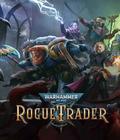
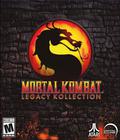
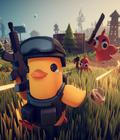
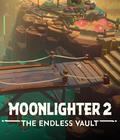
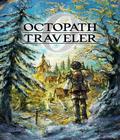
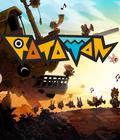
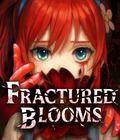

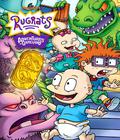 When Tommy, Chuckie, Phil and Lil see a commercial for the new Reptar video game, they pretend that they're in a video game of their own! Toggle between 8-bit and HD art, select your favorite baby and play solo or co-op in Rugrats: Adventures in Gameland, a neo-retro platformer.
When Tommy, Chuckie, Phil and Lil see a commercial for the new Reptar video game, they pretend that they're in a video game of their own! Toggle between 8-bit and HD art, select your favorite baby and play solo or co-op in Rugrats: Adventures in Gameland, a neo-retro platformer. 






